This was published 3 years ago
See them before it's too late: Seven Indigenous rock art treasures
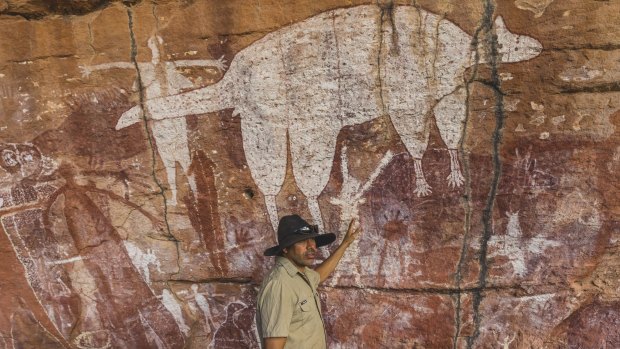
Magnificent Rock Art Gallery at Quinkan, Tropical North Queensland.Credit: Tourism Tropical North Queensland
Australia has some of the world's most significant Indigenous rock art, an unbroken chain of creative expression that stretches back 50,000 years. As well as a complex array of mythological figures that bear witness to a rich culture they also depict historic events such as the coming of Europeans – hats and horses are a giveaway – and even climate change. Yet they've not always been given the respect they deserve, as underlined by the recent destruction of a 46,000 year old habitation site in the Pilbara. Here are some that are well worth a long drive.
KAKADU NATIONAL PARK, NT
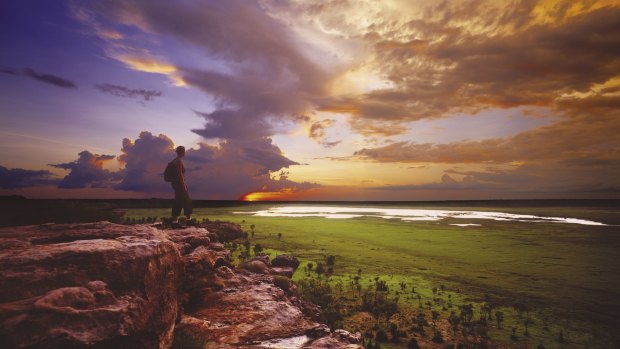
Hot, wet and spectacularly endowed with natural wonders, Kakadu is essentially a complete river system - the catchment area, floodplains and coastal wetlands of the South Alligator River. Water plus heat provides a humidicrib environment, triggering an explosion of animal life. This abundance provided the local Gaagudju people with a natural larder while the sandstone caves and rock shelters of the Arnhem Land Escarpment gave them shelter. The walls of these campsites became their canvas. In charcoal, clay and ochre they created galleries of some of humankind's oldest art. More than 5000 rock-art sites have been identified in Kakadu, some more than 30,000 years old. At Ubirr, the artworks show the gradual evolution of Aboriginal rock art, from simple stick figures to complex X-ray paintings and mythological figures such as the iconic Namarrkon, the Lightning Man, bringing violent thunderstorms that precede the wet season. See
MUTAWINTJI NATIONAL PARK, NSW
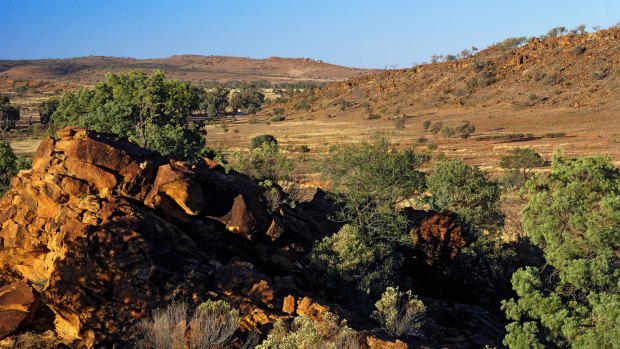
In the cracks and folds in the scorched sandstone peaks of the Bynguano Range north-east of Broken Hill, a permanent water supply made this area a virtual oasis for the Aboriginal people of the outback. Here, even in the worst drought, they could find rock wallabies and goannas, gather berries and fruit, and it was here that they left their totemic figures inscribed on the rock. The finest examples of this rock art are found in the Mutawintji Historic Site, a restricted area that can be visited on a guided tour in the company of a park ranger. See www.nationalparks.nsw.gov.au
THE GRAMPIANS, VIC
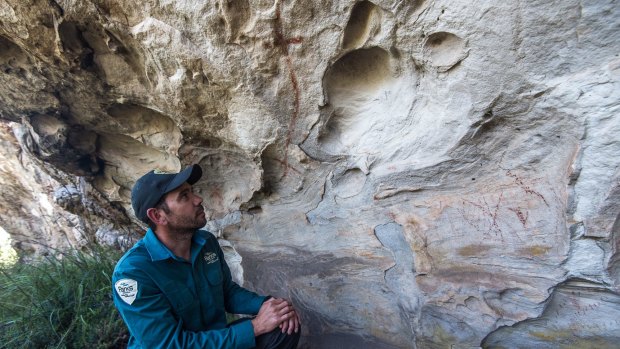
Grampians National Park in the Wimmera region of western Victoria has the largest number of rock art sites in southern Australia, some dating back more than 20,000 years. Known as Gariwerd to the local Jardwadjali people, this was traditionally a gathering place, where ceremonies would be performed, and the national park has more that 200 rock art sites with a handful open for public viewing. The Grampians Rock Art Trail is a self-drive tour but the experience is enhanced if you take one of the two tours with an Aboriginal ranger offered by the Brambuk Cultural Centre although tours have been temporarily suspended due to the COVID-19 pandemic. See www.brambuk.com.auCredit: Justin McManus
QUINKAN COUNTRY, QLD
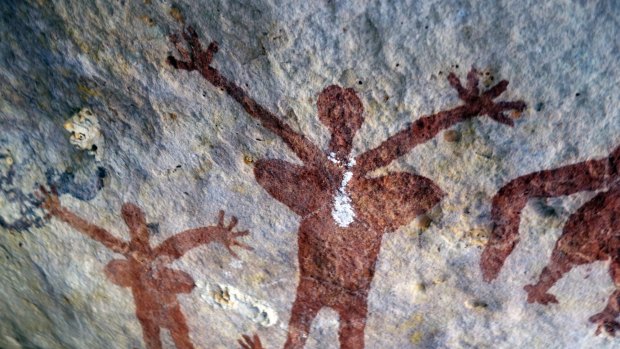
Based around the town of Laura on the Cape York Peninsula, Quinkan country has an outstanding collection of art in sandstone rock-shelter sites. Artworks include elongated male and female figures, stylised depictions of animals, stencils, engravings and Quinkan figures, mythological beings unique to the region. One wall, the Magnificent Gallery, depicts hundreds of Quinkan figures over a 40 metre frieze. Tours of various rock art sites are available through the Quinkan & Regional Cultural Centre. See www.quinkancc.com.au
DAVIDSON'S ARNHEMLAND SAFARI LODGE, NT
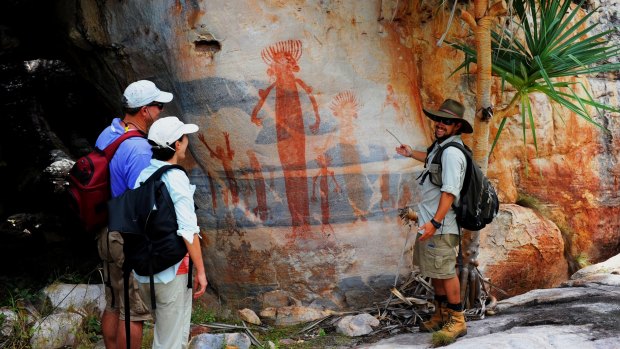
Credit: Davidson's Arnhemland Safaris
In Arnhem Land, on the far side of the East Alligator River from Kakadu National Park, Davidson's Arnhemland Safari Lodge is a privately operated concession and a window on some of Australia's most incredible Aboriginal rock art. Over millennia, the lumpy sandstone outcrops that dot the landscape have been hollowed out by the sea, creating a labyrinth of caves that made ideal sites for human habitation, and natural galleries for the Aboriginal artists of Arnhem Land. Using ochre, charcoal, clay and vegetable dyes, these unsigned artists daubed the walls with images that formed the pivots of their existence - the animals they hunted, the spirits that shaped their world and their women, the birth givers. The greatest concentration of artworks is located in an area known as "Major Art", a big sandstone platform honeycombed with grottoes and caves. Among the several styles of art represented, some show gaff-rigged trading ships from Makassar on the Indonesian island of Sulawesi, other paintings depict steam ships and men wearing hats mounted on horses, the coming of the white man. Evidence of human habitation is not just confined to the cave walls. Scattered about on the floor of the caves are rifle barrels, glass shards once used to sharpen spear points, the remnants of paperbark mattresses and burial sites. The effect is like walking through an open-air museum of anthropology. See www.arnhemland-safaris.com
BURRUP PENINSULA, WA
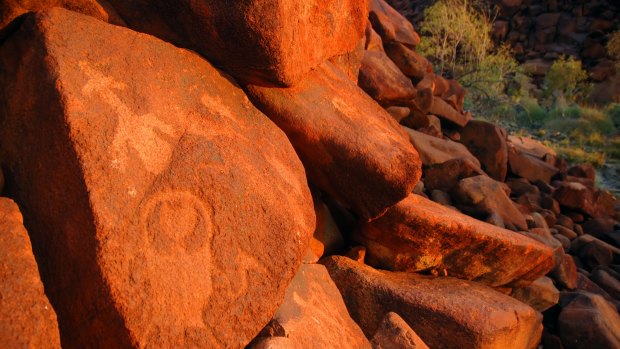
This peninsula extending north from the town of Karratha is reputedly the home of the highest concentration of rock art on the planet. Known as Murujuga to the local traditional custodians, the tumbled red rocks that typify this landscape are said to be inscribed with more than one million recorded rock art images. The oldest images, up to 40,000 years old, date from a time when the region had a different climate, and an animal population that included thylacines and a fat-tailed species of kangaroo. Despite their exposure to the elements, the dry climate and hard red rock has ensured that even the oldest of the petroglyphs are well preserved. Tours of the region are available through the Murujuga Aboriginal Corporation. See www.murujuga.org.au
Sign up for the Traveller Deals newsletter
Get exclusive travel deals delivered straight to your inbox. Sign up now.